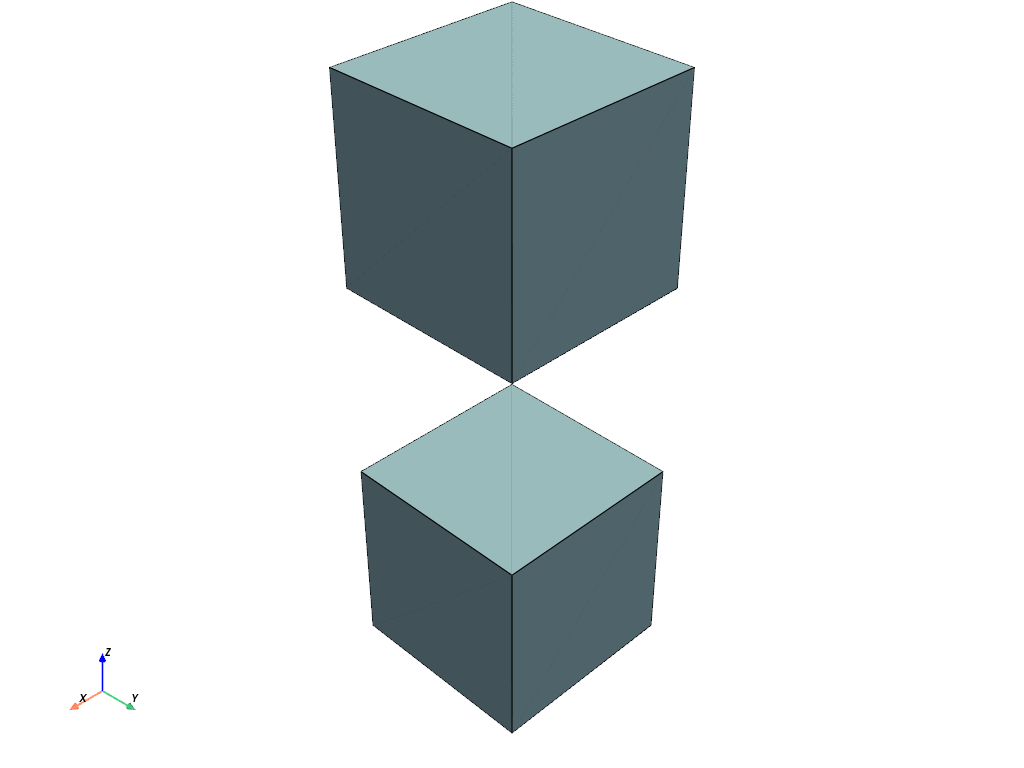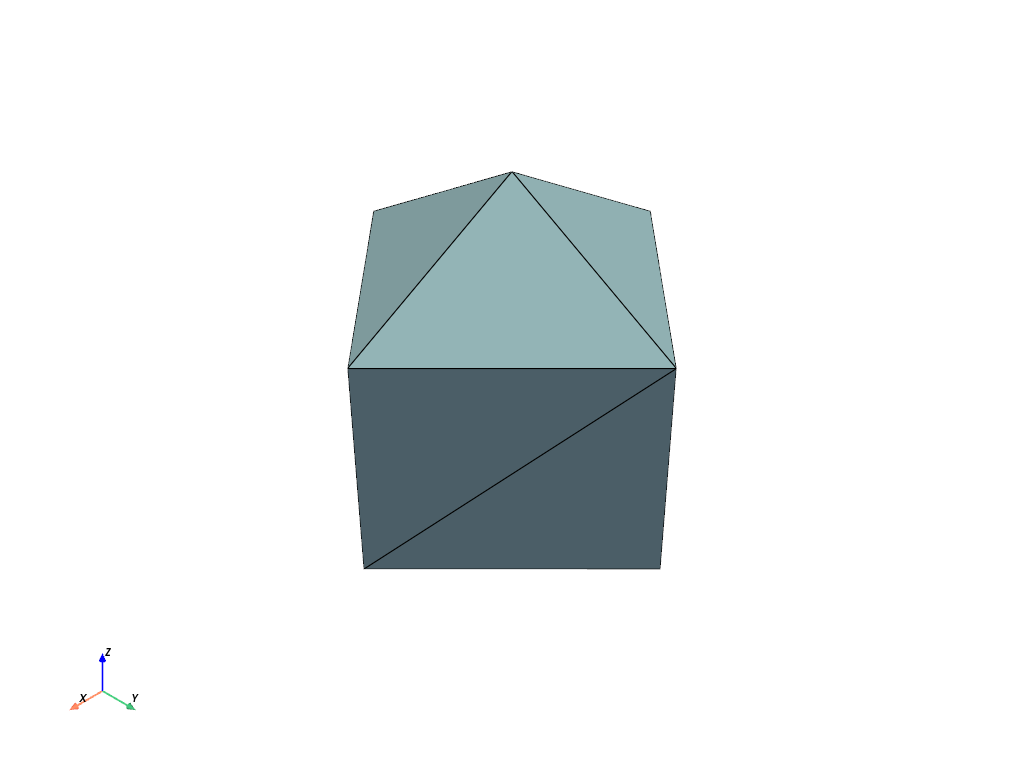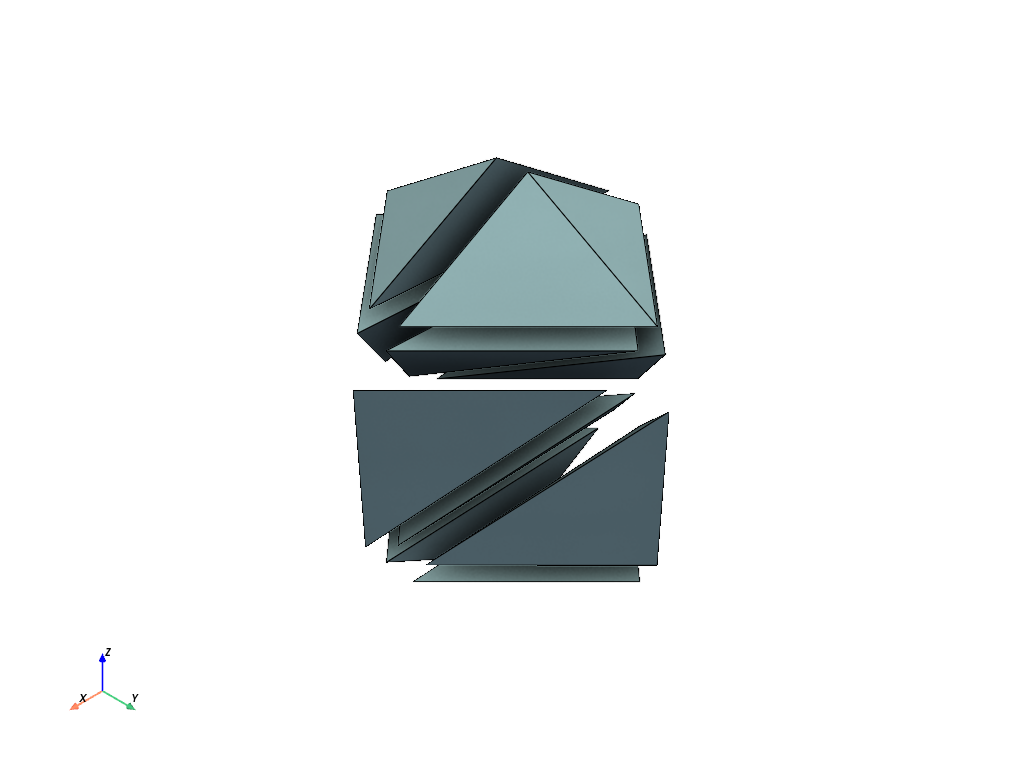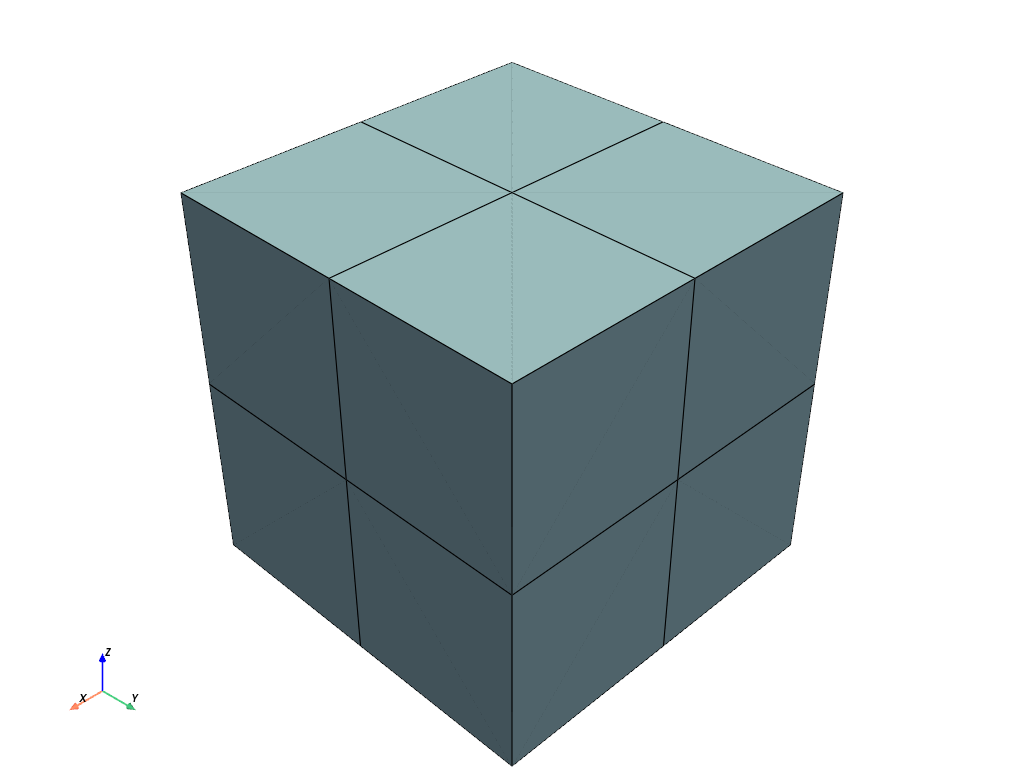注釈
Go to the end to download the full example code
非構造化グリッドの作成#
NumPy配列から不規則な非構造化グリッドを作成します.
import numpy as np
import pyvista as pv
from pyvista import CellType
非構造化グリッドは,NumPy配列から直接作成できます.これは,グリッドを最初から作成する場合や,別の形式からコピーする場合に便利です.使用可能なセルタイプとその説明については, vtkUnstructuredGrid を参照してください.
# Contains information on the points composing each cell.
# Each cell begins with the number of points in the cell and then the points
# composing the cell
cells = np.array([8, 0, 1, 2, 3, 4, 5, 6, 7, 8, 8, 9, 10, 11, 12, 13, 14, 15])
# cell type array. Contains the cell type of each cell
cell_type = np.array([CellType.HEXAHEDRON, CellType.HEXAHEDRON])
# in this example, each cell uses separate points
cell1 = np.array(
[
[0, 0, 0],
[1, 0, 0],
[1, 1, 0],
[0, 1, 0],
[0, 0, 1],
[1, 0, 1],
[1, 1, 1],
[0, 1, 1],
]
)
cell2 = np.array(
[
[0, 0, 2],
[1, 0, 2],
[1, 1, 2],
[0, 1, 2],
[0, 0, 3],
[1, 0, 3],
[1, 1, 3],
[0, 1, 3],
]
)
# points of the cell array
points = np.vstack((cell1, cell2)).astype(float)
# create the unstructured grid directly from the numpy arrays
grid = pv.UnstructuredGrid(cells, cell_type, points)
# For cells of fixed sizes (like the mentioned Hexahedra), it is also possible to use the
# simplified dictionary interface. This automatically calculates the cell array.
# Note that for mixing with additional cell types, just the appropriate key needs to be
# added to the dictionary.
cells_hex = np.arange(16).reshape([2, 8])
# = np.array([[0, 1, 2, 3, 4, 5, 6, 7], [8, 9, 10, 11, 12, 13, 14, 15]])
grid = pv.UnstructuredGrid({CellType.HEXAHEDRON: cells_hex}, points)
# plot the grid (and suppress the camera position output)
_ = grid.plot(show_edges=True)

4面体グリッド#
ここでは,非構造化4面体グリッドを作成する方法を説明します.
# There are 10 cells here, each cell is [4, INDEX0, INDEX1, INDEX2, INDEX3]
# where INDEX is one of the corners of the tetrahedron.
#
# Note that the array does not need to be shaped like this, we could have a
# flat array, but it's easier to make out the structure of the array this way.
cells = np.array(
[
[4, 6, 5, 8, 7],
[4, 7, 3, 8, 9],
[4, 7, 3, 1, 5],
[4, 9, 3, 1, 7],
[4, 2, 6, 5, 8],
[4, 2, 6, 0, 4],
[4, 6, 2, 0, 8],
[4, 5, 2, 8, 3],
[4, 5, 3, 8, 7],
[4, 2, 6, 4, 5],
]
)
celltypes = np.full(10, fill_value=CellType.TETRA, dtype=np.uint8)
# These are the 10 points. The number of cells does not need to match the
# number of points, they just happen to in this example
points = np.array(
[
[-0.0, 0.0, -0.5],
[0.0, 0.0, 0.5],
[-0.43, 0.0, -0.25],
[-0.43, 0.0, 0.25],
[-0.0, 0.43, -0.25],
[0.0, 0.43, 0.25],
[0.43, 0.0, -0.25],
[0.43, 0.0, 0.25],
[0.0, -0.43, -0.25],
[0.0, -0.43, 0.25],
]
)
# Create and plot the unstructured grid
grid = pv.UnstructuredGrid(cells, celltypes, points)
grid.plot(show_edges=True)

面白半分に,すべてのセルを分離して,個々のセルをプロットしてみましょう.中心から少しずらして, "分解図" を作ってみましょう.
split_cells = grid.explode(0.5)
split_cells.plot(show_edges=True, ssao=True)

Total running time of the script: (0 minutes 1.609 seconds)
